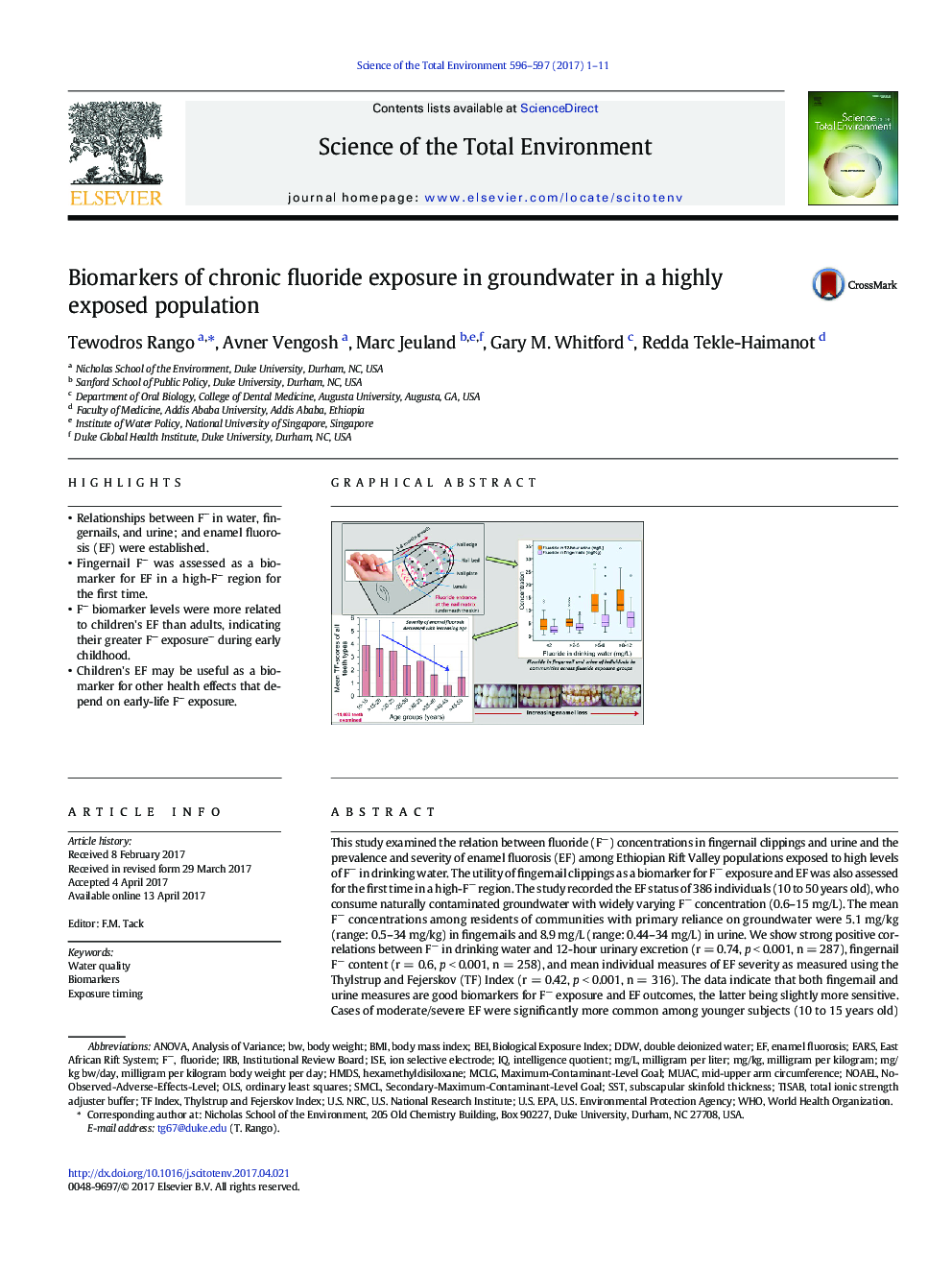| کد مقاله | کد نشریه | سال انتشار | مقاله انگلیسی | نسخه تمام متن |
|---|---|---|---|---|
| 5750669 | 1619700 | 2017 | 11 صفحه PDF | دانلود رایگان |
- Relationships between F in water, fingernails, and urine; and enamel fluorosis (EF) were established.
- Fingernail F was assessed as a biomarker for EF in a high-F region for the first time.
- F biomarker levels were more related to children's EF than adults, indicating their greater Fâ exposure during early childhood.
- Children's EF may be useful as a biomarker for other health effects that depend on early-life F exposure.
This study examined the relation between fluoride (Fâ) concentrations in fingernail clippings and urine and the prevalence and severity of enamel fluorosis (EF) among Ethiopian Rift Valley populations exposed to high levels of Fâ in drinking water. The utility of fingernail clippings as a biomarker for Fâ exposure and EF was also assessed for the first time in a high-Fâ region. The study recorded the EF status of 386 individuals (10 to 50 years old), who consume naturally contaminated groundwater with widely varying Fâ concentration (0.6-15 mg/L). The mean Fâ concentrations among residents of communities with primary reliance on groundwater were 5.1 mg/kg (range: 0.5-34 mg/kg) in fingernails and 8.9 mg/L (range: 0.44-34 mg/L) in urine. We show strong positive correlations between Fâ in drinking water and 12-hour urinary excretion (r = 0.74, p < 0.001, n = 287), fingernail Fâ content (r = 0.6, p < 0.001, n = 258), and mean individual measures of EF severity as measured using the Thylstrup and Fejerskov (TF) Index (r = 0.42, p < 0.001, n = 316). The data indicate that both fingernail and urine measures are good biomarkers for Fâ exposure and EF outcomes, the latter being slightly more sensitive. Cases of moderate/severe EF were significantly more common among younger subjects (10 to 15 years old) than older subjects (mostly > 25 years old) (p < 0.001), consistent with their greater exposure to Fâ during early childhood, which is the only period of life the enamel is at risk of fluorosis. In this younger population, EF may be useful as a biomarker for identifying individuals with other potential health effects that depend on a specific age window of susceptibility. The finding of exceptionally high Fâ concentrations in water, fingernail clippings and urine in this region should motivate further investigations of other potential health consequences such as bone disease and abnormalities in the function of the neurological and endocrine systems.
232
Journal: Science of The Total Environment - Volumes 596â597, 15 October 2017, Pages 1-11
